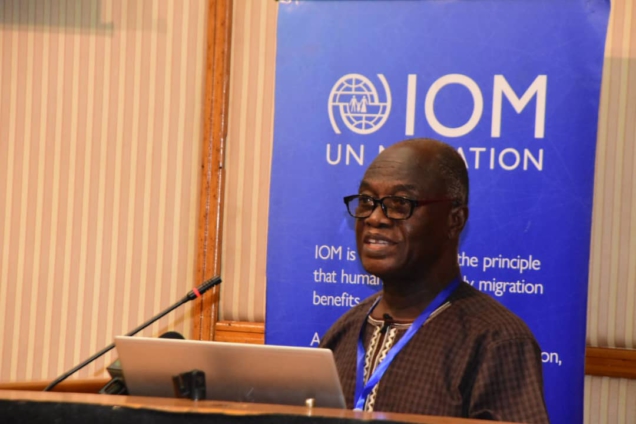About three in every four (76.2%) non-Ghanaians are working in three occupations only; namely, services and sales (34.0%), skilled agricultural, forestry and fishery (25.0%) and craft and related trades (17.2%).
According to the latest thematic report on Migration by the Ghana Statistical Service has revealed, these are easy-entry jobs which call for no skills or basic skills in order for one to go into them.
The majority of the working immigrants are self-employed without employees.
The highest proportion of non-Ghanaian population are from Nigeria, Togo, Niger and Burkina Faso
The migrants constituted 28.9% of the total population of 30,832,019 enumerated in the 2021 Population and Housing Census.
Majority (52.5%) of the migrants were females.
Speaking to Joy Business, Associate Professor of Population Studies at the Regional Institute for Population Studies at the University of Ghana, Professor John Anarfi said this is largely attributed to Ghanaians moving out of the country without skills in certain sectors.
He therefore entreated government to diversify the economy to have more Ghanaians acquire additional skills to accelerate the country’s economic growth.
“Ghanaians who are migrating are the main reason and those coming in are going to these areas. So as long as the situation continue, we will get people to occupy jobs which is not too good”, he said
The report further said the proportion of migrants in the population is much higher in rural areas (33.9%) than urban areas (22.2%).
More than a third (35.9%)of the migrants moved to settle permanently while 24.9% also moved due to marriage/family reunification.
Greater Accra received higher number of migrants
The Greater Accra Region received a higher number of migrants than all the other regions.
Six regions received more people than they sent out. All of them are in the south of the country.
The report furthered that there has been a slight decline in migration from 2010 – 2021. This may be as a result of the Covid-19 pandemic because most migrants had gone back to their hometowns and had not returned at the time the census was conducted.
There has been a decline in the non-Ghanaian population in the country between 2010 and 2021.
Latest Stories
-
IWD 2025: ‘Financial institutions must prioritise women’s needs’ – Dr Joy Kategekwa
1 minute -
IWD 2025: Accelerate action for women in trade, says Joy Kategekwa
10 minutes -
Political experts call for enhanced security for Special Prosecutor
15 minutes -
Minerals Commission hands over reclaimed galamsey lands to three communities
17 minutes -
Mahama, IGP urged to resolve dispute at Manya Yoyim, Adjena
17 minutes -
Empowering women is a national imperative — Opoku-Agyemang
19 minutes -
2025 Budget holds the key to economic recovery – Finance Minister
25 minutes -
Scrap dealer jailed for stealing Ghana Water Limited’s fittings
28 minutes -
We’ll tackle institutional, fiscal barriers hindering Affirmative Action implementation – Gender Minister
32 minutes -
People came to help solve Ghana’s problems, not as NDC or NPP – Dr Ishmael Yamson on National Economic Dialogue
2 hours -
Agric sector leaders call for increased support for women in food sector
2 hours -
‘State-Owned Enterprises now serve political interests, not their purpose’ – Dr Ishmael Yamson
3 hours -
North Korean hackers cash out hundreds of millions from $1.5bn ByBit hack
3 hours -
Mass blackouts in storm-hit eastern Australia
4 hours -
Catholic priest abducted, killed in Nigeria, Christian group says
4 hours

